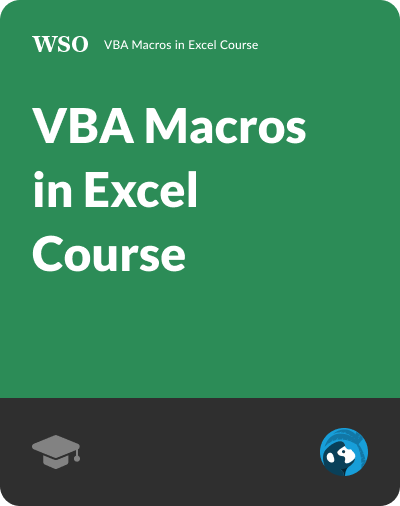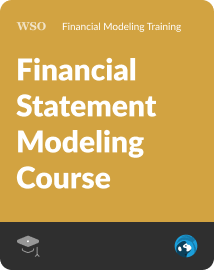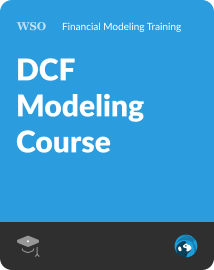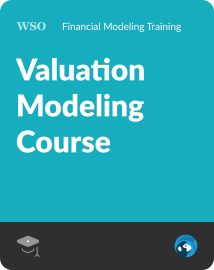Checking Account
It is a type of deposit account or transactional account
What is a Checking Account?
Easy access to your money is necessary to live every day. However, while you could put all your cash in an investment such as a stock or bond, this exposes you to the risk of losing some or all of your investment.
On the other hand, you could store all your cash under your mattress, but this exposes you to a lack of security for your money.
The safest place to store cash that you know you’ll spend every day or throughout the month is a checking account with an FDIC-insured bank (or the equivalent outside of the U.S.).
According to the FDIC, only about 5.4% of U.S. households do not use traditional bank services, such as a checking account.
Liquidity is incredibly important when deciding where to store money you’ll need to pay for bills, groceries, transportation, and commodities. These accounts are very liquid, which makes accessing your money easy, but, in exchange, interest rates are usually quite low.
There are thousands of financial institutions to choose from when deciding where to store your money. Some important concepts are fees, interest rates, convenience, and customer service.
There are also numerous types of checking accounts that vary depending on your purposes, like a business account or a student account.
This article will provide insight into choosing an account, what to look for, and some common questions regarding setting up an account.
Understanding a checking account
It is a type of deposit or transactional account that can be opened at a brick-and-mortar bank, online bank, or credit union. You deposit money into the account and can withdraw funds at any moment for free to pay bills and make purchases.
These accounts generally come with a debit card to easily access your funds. A debit card withdraws money from your account and sends it to the receiving party. A debit card can also be used at ATMs, where the funds are withdrawn, and you are given cash.
Additionally, you can link your account to your company to receive your paychecks or to a third-party service to send and receive money (like Venmo or PayPal).
Money deposited into a chartered bank institution is insured for up to $250,000 per individual per bank by the Federal Deposit Insurance Corporation (FDIC).
These accounts generally are loss leaders, which means they are offered below their cost or at market value. Banks do this to attract new customers and secure their business when it comes time to take out a personal loan or mortgage.
While your money is secure, it is unlikely to grow significantly because such accounts have low-interest rates (often 0%). This is because these accounts are designed for constant changes in the amount of money in your account.
checking account Advantages and disadvantages
The advantages include:
- Some accounts, albeit small, can earn you interest on your funds just for sitting in the bank.
- Your money is secure because (in the U.S.) it is most likely FDIC-insured up to $250,000.
- You can easily access your money through debit cards, ATM cards, checks, and online transfers. With these payment methods, you do not have to carry cash around all the time.
- Direct deposits eliminate the risk of losing checks and can ensure that your money gets deposited faster.
- Tracking your spending is easier because many bank apps record where you spend your money.
- The ability to freeze your debit card if lost or stolen provides added security to your account.
On the other hand, the disadvantages are:
- Interest rates are generally quite low, while many banks don’t offer any interest. This is because checking accounts are designed for short-term storage.
- Some accounts may have fees that are charged either monthly or annually.
- Some banks have minimum balance requirements, so if you don’t meet them, there may be a fee.
checking account Depositing Money
These accounts accept a variety of deposits:
- Direct deposits allow the money to automatically be added to your account by sharing your account information. So, for example, paychecks and government benefits can be sent straight to your account without a paper check.
- Mobile check deposits enable you to deposit your paper check into your account by taking a photo through an app. Most banks have this function as part of their app, but some may still require you to deposit the check in person at your bank.
- ATM deposits allow you to deposit cash into your account at an ATM. There is usually a designated slot at the ATM to put your cash directly into.
- Deposits made with a teller enable you to speak with an employee at the branch and deposit your cash or check.
- ACH deposits occur when money is sent to you from another bank account. ACH stands for Automated Clearing House, the network that pushes money from one account to another. Over 10,000 institutions use this system.
- Domestic wire transfers are the electronic transfer of funds from one bank to a different bank. Wire transfers typically are accompanied by a fee ranging from $15 to $50.
checking account Spending Money
There are a variety of ways to spend your money:
- Checks from your bank can be written to a receiving party. Once the check is deposited in the receiving party’s account, the money is withdrawn from your account.
- Debit cards can be used at stores and online. Once the card is used, the amount will be withdrawn from your account and sent to the receiving party. These cards can also be used to make withdrawals at an ATM.
- ATM cards can be used to withdraw at an ATM but cannot be used for purchases.
- ACH transfers allow you to schedule withdrawals from your account.
- Wire transfers enable you to spend money in foreign countries from your country.
- Peer-to-peer (P2P) payments allow you to send money to someone else’s account using their email address or account information. This is done on your bank’s app or a third party, like Venmo.
Types of Checking Accounts
Different types are:
1. Standard or traditional checking
This is the standard account that millions of people use to pay bills, write checks, and make purchases. Unfortunately, this type of account is generally pretty basic and doesn’t come with any additions like rewards.
Key elements of traditional accounts are:
- Unlimited checks
- Debit card access
- Access to online and mobile banking
- ATM access
- Usually, a physical bank location
- May or may not have fees
2. Interest Checking
These types of accounts are similar to standard accounts but come with the ability to earn interest on your balance. These interest rates are substantially lower than what you earn with a high-yield savings account or a certificate of deposit.
3. Rewards checking
With this account, you can earn rewards when you use the debit card. Rewards can include cash back, or you may earn points towards gift cards or travel. However, these accounts generally come with a fee.
4. Student and teen checking
These accounts are designed for students with limited bank account experience. They tend to have a minimum and maximum age range in which someone can qualify. These accounts generally have no fees or minimums.
5. Senior Checking
These accounts are designed for older clients, and there tends to be a minimum age to qualify. Some senior accounts pay interest or dividends, waiver fees, and offer personalized debit cards.
6. Second chance checking
These are designed for people who have previously struggled with managing their bank accounts. This may be your next best option if you cannot get approved for a traditional account.
Second chance accounts have higher fees than standard accounts. However, if this account is used responsibly, it can qualify you for a traditional account in the future.
7. Checkless checking
A checkless account is pretty intuitive. It has all the same functions as a traditional account but no check-writing capabilities.
8. Commercial or business account
These are used by companies and are owned by the respective company. Transactions generally have to be approved by the company or authorized by the owner.
checking account Vs. savings account
A checking and savings account are deposit accounts, but their design differs.
| Checking Account | Savings Account |
|---|---|
| Intended for short-term | Intended for long-term |
| Low to no interest rate on balance | Higher interest rate on balance for growth |
| No limit on withdrawals | Often has a limit on withdrawals |
| Debit card access | No debit card access |
| Unlimited deposits | Unlimited deposits |
Check to make sure your savings account is FDIC-insured. You may be penalized if you make too many withdrawals with a savings account, but not for a checking account.
How to open a checking account
Opening an account is simple and requires little time. After researching which bank to go with, you can generally fill out the application online. Most applications take less than 10 minutes to fill out.
The application process will require providing some personal and financial information. A small initial deposit will also be required if your application is accepted.
What information will the bank need:
- Name
- Mailing address
- Phone number
- Date of birth
- Social Security Number
- Government-issued ID (in some cases)
Both individuals must provide the aforementioned details if they apply for a joint account.
Some agencies track and report your banking history. Banks and credit unions will look at your consumer banking report to accept your application. The two main agencies are ChexSystem and Early Warning System. Ideally, these agencies will have nothing to report.
The report includes whether you have ever:
- Had checks bounced
- Refused to pay late fees
- Had accounts closed due to mismanagement
- Committed fraud
You’ll have to link an external account using your routing and account numbers to make the initial deposit. If you do not have an account to link, you can mail or bring a check to the bank branch.
It may take a few days for your debit card to arrive in the mail after your account is set up.
Choosing a Checking Account
Choosing a bank to open an account with can be difficult given the abundance of options available. However, there are a few things to keep in mind when deciding.
Some fees to watch out for (the lower, the better):
- Monthly maintenance fees
- Minimum balance fees
- Account inactivity fees
- Wire transfer fees
- ATM fees and surcharges
- Non-sufficient funds fees
- Overdraft fees
- Overdraft protection fees
Look into possible actions to avoid these fees, such as always keeping a certain amount in your account to avoid minimum balance fees.
Some other features to look for:
- Rewards and cashback
- Interest rates
- The convenience of a physical branch near you
- User-friendly mobile banking
- Quality customer service
- Sign-up bonuses
Checking Account FAQs
There is no limit to how many checking accounts you can have. Having multiple accounts may make sense if you are worried about having all of your money FDIC-insured (only up to $250,000 per account is insured).
Some things to keep in mind are:
- The number of fees you’ll have to pay
- How capable are you at managing multiple accounts
The primary reason for being denied is an issue with your consumer banking report. Some instances that could lead to being denied an account are:
- Excess overdrafts
- Numerous bounced checks
- Involuntary account closures
- Unpaid fees
- Negative balances
- Suspected fraud or identity theft
If you are denied, you can request that the bank review your application again, but you will have to provide a sound argument for why you should be accepted.
If you are denied multiple times, try applying to a second chance account.
There is the possibility that your account can affect your credit score, but only under special circumstances. Simply using the card to make deposits, write checks, and pay bills will not have an effect on your credit score.
Additionally, closing accounts that you are no longer using will not affect your credit score. Overdrawn accounts will also not appear on your credit report as long as you take care of the issue swiftly.
The credit bureaus are notified when you have an overdrawn account, and it does not get paid in a timely manner. Your account will get turned over to a collection agency which could potentially bring down your credit score.
An overdraft occurs when you write a check or make a purchase for more than you have in your account. In this instance, the bank may cover the difference. As a result, the bank will charge you a hefty fee.
Furthermore, if your account balance remains overdrawn for some time, the bank may start charging interest.
The best method to avoid overdraft fees is to only spend the money that you have in your account. Additionally, you can use a service called overdraft protection. This service has a line of credit that kicks in if the current account balance cannot cover the payment.
There are also some banks with no overdraft fees.









or Want to Sign up with your social account?